Property from an Important Scandinavian Collector Lucio Fontana Concetto Spaziale, Attese 1965 waterpaint on canvas 65 x 54 cm (25 5/8 x 21 1/4 in.) Signed, titled and inscribed ‘L. Fontana "Concetto Spaziale ATTESE" Possible che tutto sia contaminato di...’ on the reverse.
Provenance Galerie Mathias Fels, Paris Stig Nordström, Halmstadt Beijers Auktioner, Stockholm, Moderna Varauktion, 21 May 1990, lot 160 Acquired at the above sale by the present owner Literature E. Crispolti, Fontana Catalogo Generale, vol II, Milan 1986, p. 585, no. 65 T 140 (illustrated) E. Crispolti, Lucio Fontana Catalogo Ragionato di Sculture, Dipinti, Amientazoni, vol. II, Milan 2006, p. 770, no. 65 T 140 (illustrated) Catalogue Essay ‘With the taglio I have invented a formula that I think I cannot perfect… I succeeded in giving those looking at my work a sense of spatial calm, of cosmic rigour, or serenity with regard to the infinite. Further than this I could not go.’ (Lucio Fontana quoted in: Pia Gottschaller, Lucio Fontana The Artist’s Materials, Los Angeles: 2012, p.58) Concetto Spaziale, Attese elegantly evokes Lucio Fontana's fascination with technological advancements and space travel. In the 1946 Manifesto Blanco (White Manifesto) which was overseen by Fontana, he had laid the groundwork for the technical and spatial experiments which would occupy him for the rest of his life, including his tagli. Fontana was exploring a fourth dimension in art, combining sculpture, painting and architecture. Throughout his body of work, he reflected on paintings as objects rather than just picture surfaces. By breaking through the plane of the canvas, Fontana’s quest for a four-dimensional painting is achieved, as he adds a spatial and temporal dimension to the work. Concetto Spaziale, Attesse challenges the viewer to see through the canvas into the chaos and infinity of space, while the slashes reflect the object’s presence in time. The inclusion of the word 'attese' in the title, meaning ‘waiting,’ emphasises this contemplation of an object that exists in time as well as in space. Just as astronauts were redefining what was achievable by science, Fontana was creating a new language for painting which responded to the inventions and triumphs of science. Figurative painting failed to express this new reality, but modern viewers could recognise themselves in Fontana's dynamic, abstract works. Gazing into the void that the slashes of this work reveal, one realises that, in painting as well as technology, new barriers had been brought down, new concepts created. The present lot, created between 1965 and 1966, belongs to what is arguably Fontana's most iconic and revered series. It was in 1966 that Fontana exhibited his Concetto Spaziale series in the Italian Pavillion at the XXXIII Venice Biennale. There, a white room designed by architect Carlo Scarpa was filled with white canvases with these iconic cuts, creating an immersive 'spatial environment'. At the Biennale, Fontana received the International Grand Price for Painting, just two years before his death. Fontana created tagli on a number of different coloured backgrounds, but the white examples stand out as the epitome of his work, as demonstrated by their inclusion in the Biennale. Considered by Fontana himself as the purest, simplest colour, white represented a ‘spatial and cosmic philosophy’. The canvas, rather than being left unpainted – as was the case in his earlier works – is carefully coated in pristine white paint, contributing to the materiality and texture of the work. In Concetto Spaziale the three tagli activate de painting as a multidimensional object. These three violent, slightly curved yet elegant slashes imbue the white canvas with scientific curiosity, allowing the artist and the viewer alike to explore what lies behind the surface. At the same time, the cuts add a rhythmic punctuation to the composition that bolsters its sheer, monolithic beauty. Read More
Property from an Important Scandinavian Collector Lucio Fontana Concetto Spaziale, Attese 1965 waterpaint on canvas 65 x 54 cm (25 5/8 x 21 1/4 in.) Signed, titled and inscribed ‘L. Fontana "Concetto Spaziale ATTESE" Possible che tutto sia contaminato di...’ on the reverse.
Provenance Galerie Mathias Fels, Paris Stig Nordström, Halmstadt Beijers Auktioner, Stockholm, Moderna Varauktion, 21 May 1990, lot 160 Acquired at the above sale by the present owner Literature E. Crispolti, Fontana Catalogo Generale, vol II, Milan 1986, p. 585, no. 65 T 140 (illustrated) E. Crispolti, Lucio Fontana Catalogo Ragionato di Sculture, Dipinti, Amientazoni, vol. II, Milan 2006, p. 770, no. 65 T 140 (illustrated) Catalogue Essay ‘With the taglio I have invented a formula that I think I cannot perfect… I succeeded in giving those looking at my work a sense of spatial calm, of cosmic rigour, or serenity with regard to the infinite. Further than this I could not go.’ (Lucio Fontana quoted in: Pia Gottschaller, Lucio Fontana The Artist’s Materials, Los Angeles: 2012, p.58) Concetto Spaziale, Attese elegantly evokes Lucio Fontana's fascination with technological advancements and space travel. In the 1946 Manifesto Blanco (White Manifesto) which was overseen by Fontana, he had laid the groundwork for the technical and spatial experiments which would occupy him for the rest of his life, including his tagli. Fontana was exploring a fourth dimension in art, combining sculpture, painting and architecture. Throughout his body of work, he reflected on paintings as objects rather than just picture surfaces. By breaking through the plane of the canvas, Fontana’s quest for a four-dimensional painting is achieved, as he adds a spatial and temporal dimension to the work. Concetto Spaziale, Attesse challenges the viewer to see through the canvas into the chaos and infinity of space, while the slashes reflect the object’s presence in time. The inclusion of the word 'attese' in the title, meaning ‘waiting,’ emphasises this contemplation of an object that exists in time as well as in space. Just as astronauts were redefining what was achievable by science, Fontana was creating a new language for painting which responded to the inventions and triumphs of science. Figurative painting failed to express this new reality, but modern viewers could recognise themselves in Fontana's dynamic, abstract works. Gazing into the void that the slashes of this work reveal, one realises that, in painting as well as technology, new barriers had been brought down, new concepts created. The present lot, created between 1965 and 1966, belongs to what is arguably Fontana's most iconic and revered series. It was in 1966 that Fontana exhibited his Concetto Spaziale series in the Italian Pavillion at the XXXIII Venice Biennale. There, a white room designed by architect Carlo Scarpa was filled with white canvases with these iconic cuts, creating an immersive 'spatial environment'. At the Biennale, Fontana received the International Grand Price for Painting, just two years before his death. Fontana created tagli on a number of different coloured backgrounds, but the white examples stand out as the epitome of his work, as demonstrated by their inclusion in the Biennale. Considered by Fontana himself as the purest, simplest colour, white represented a ‘spatial and cosmic philosophy’. The canvas, rather than being left unpainted – as was the case in his earlier works – is carefully coated in pristine white paint, contributing to the materiality and texture of the work. In Concetto Spaziale the three tagli activate de painting as a multidimensional object. These three violent, slightly curved yet elegant slashes imbue the white canvas with scientific curiosity, allowing the artist and the viewer alike to explore what lies behind the surface. At the same time, the cuts add a rhythmic punctuation to the composition that bolsters its sheer, monolithic beauty. Read More
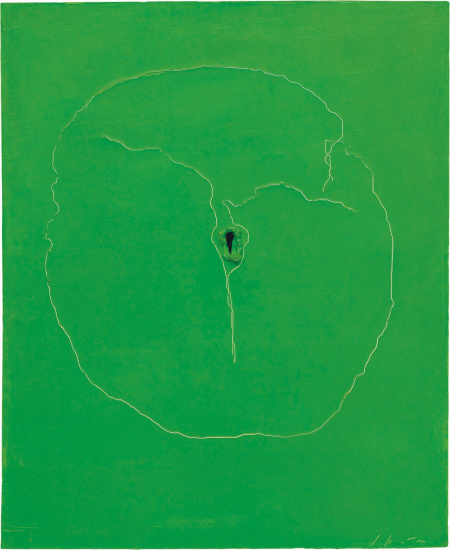
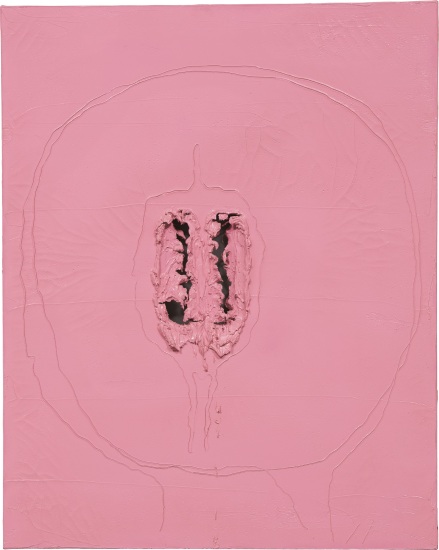
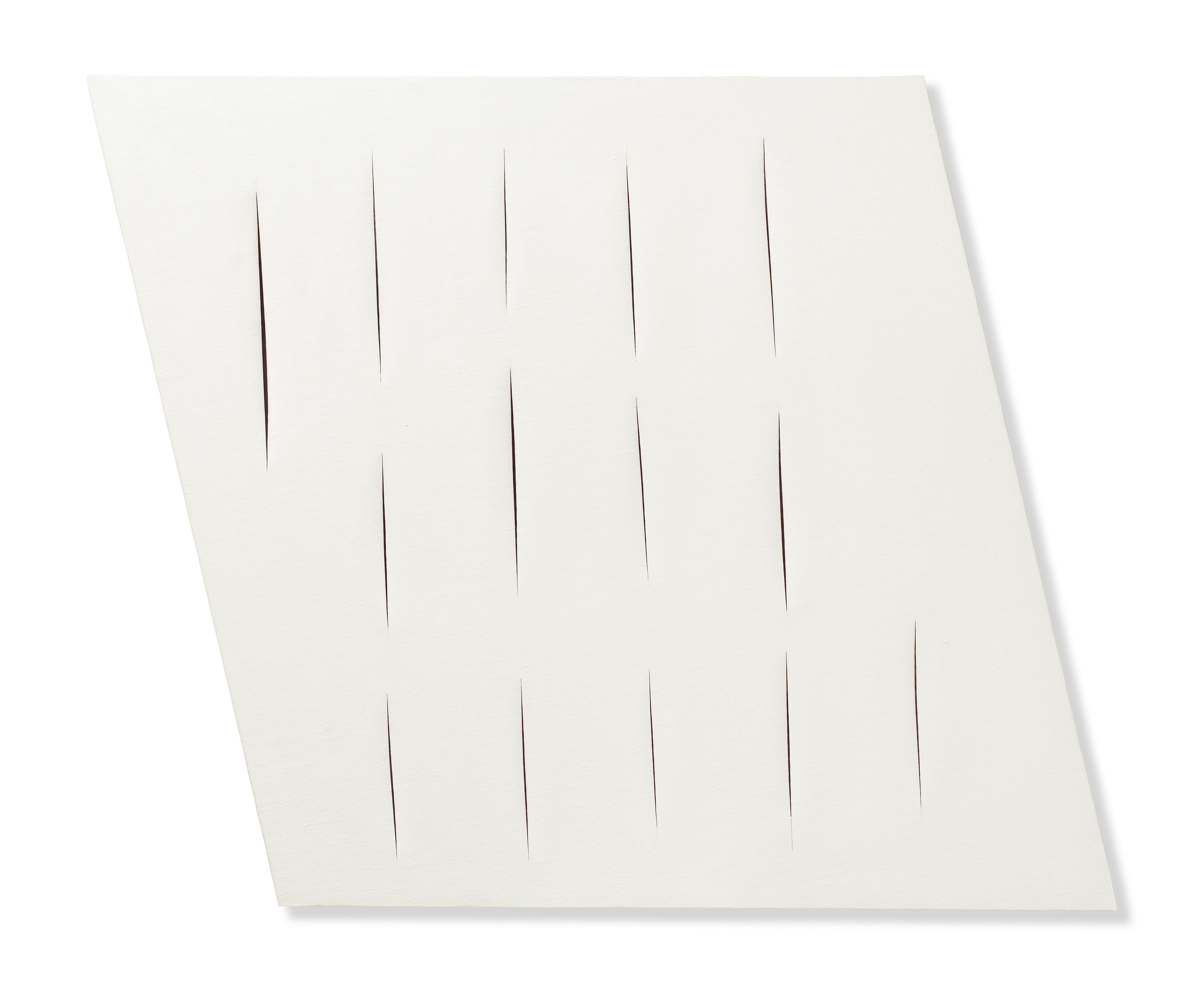
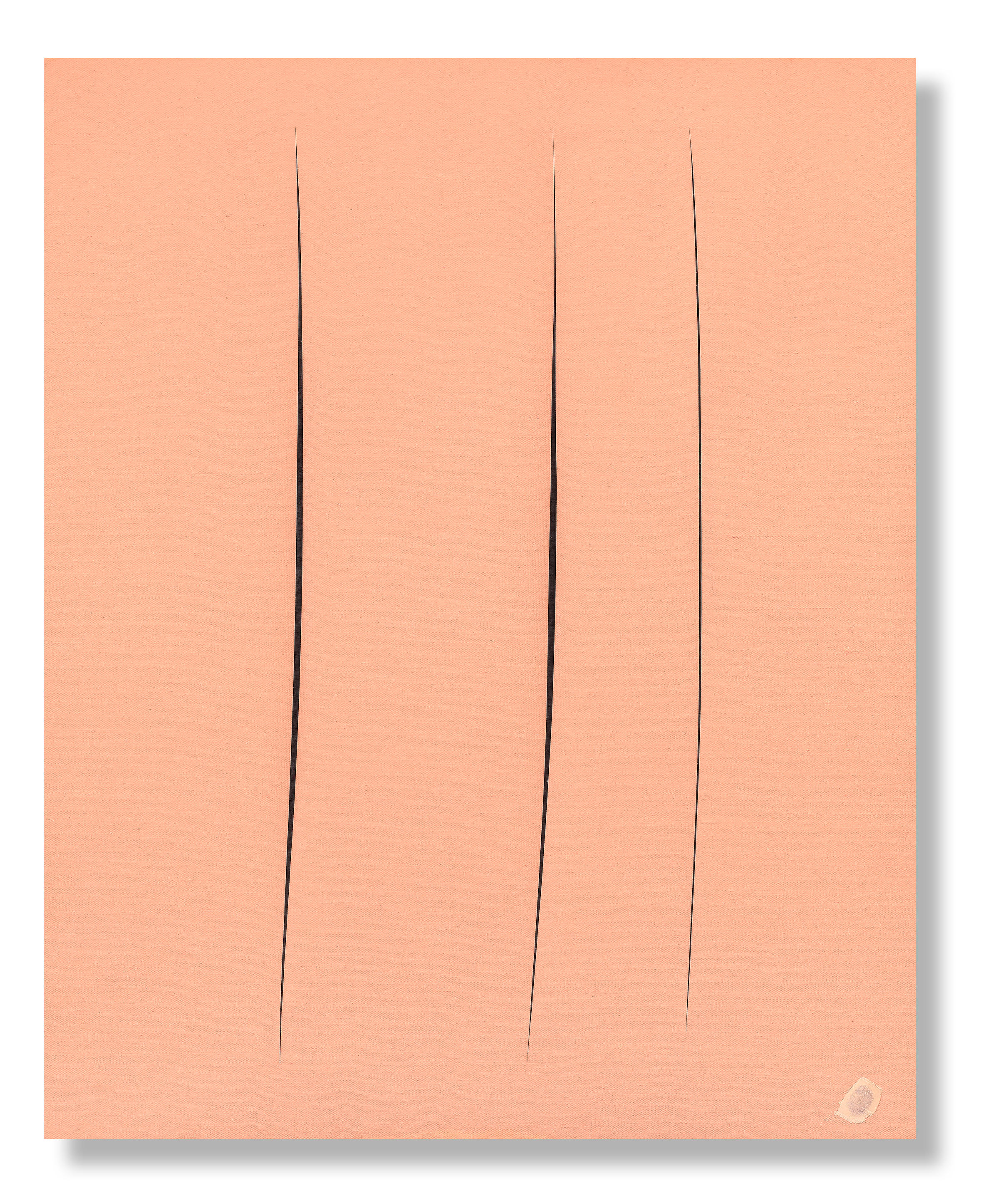
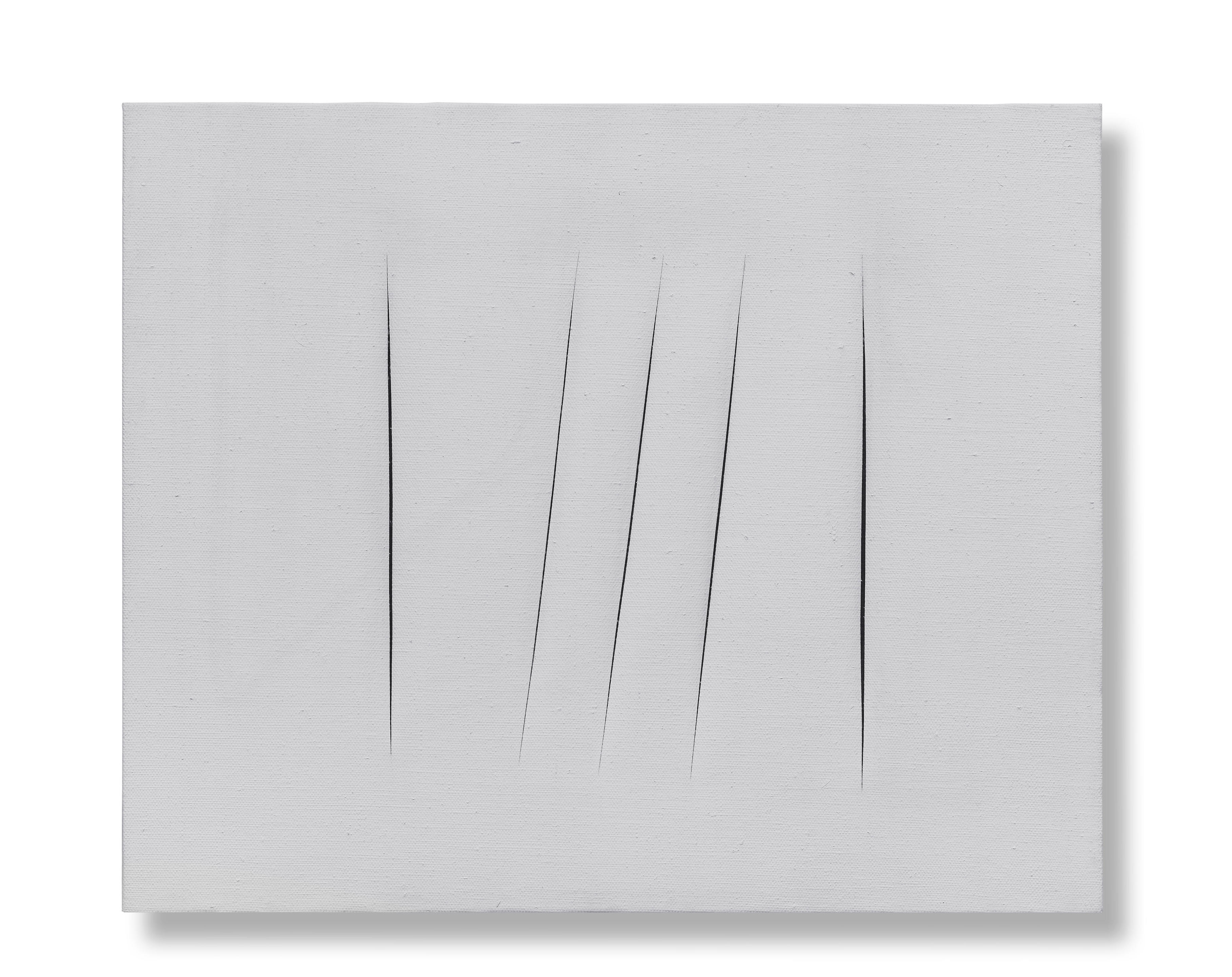



.jpg)
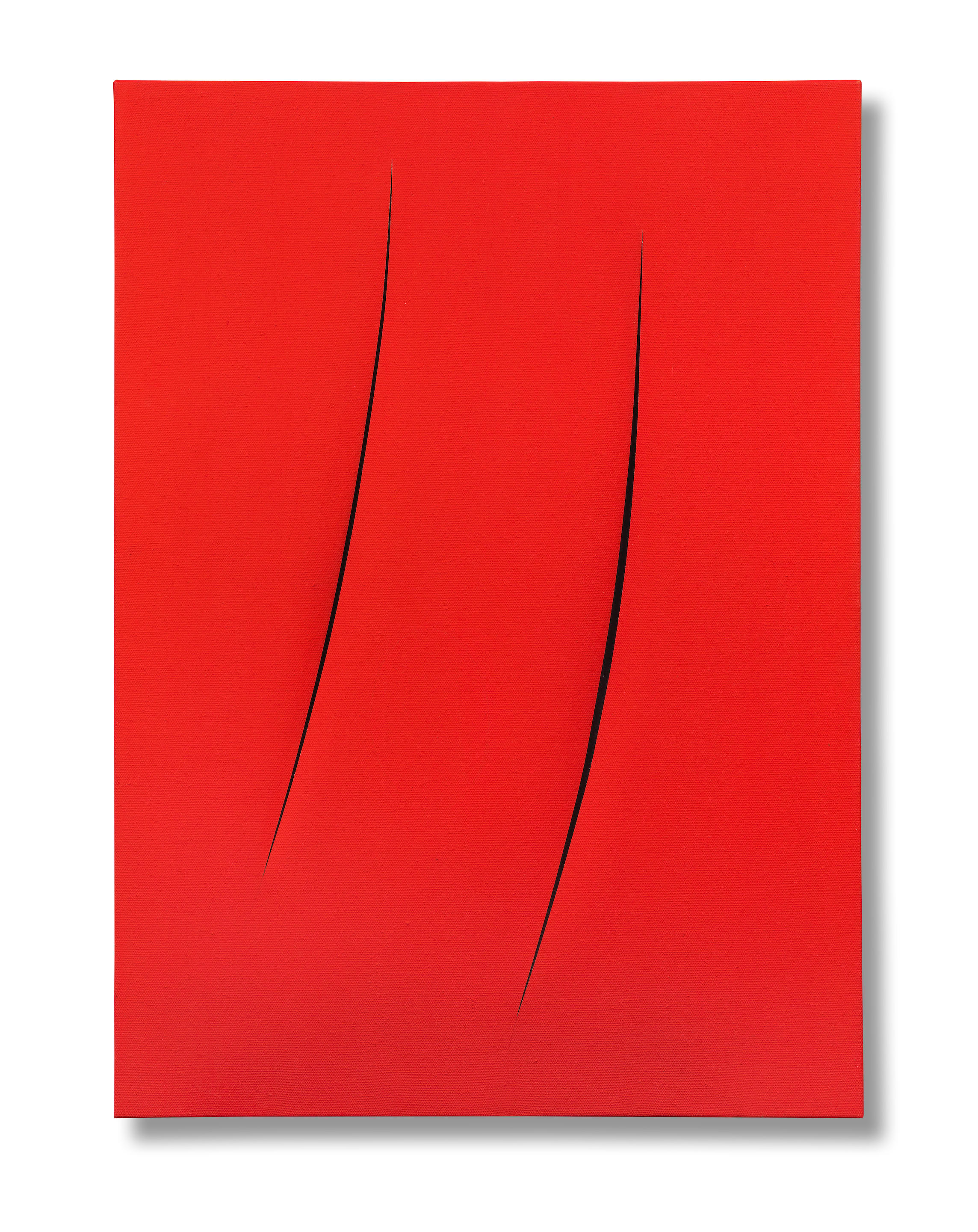
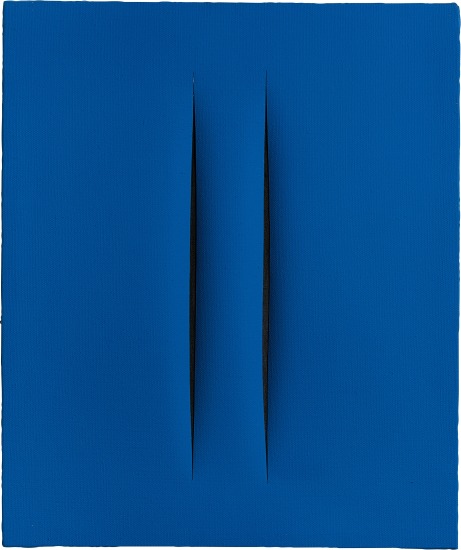
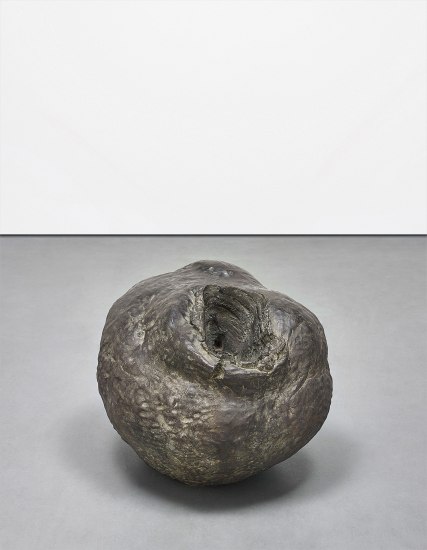

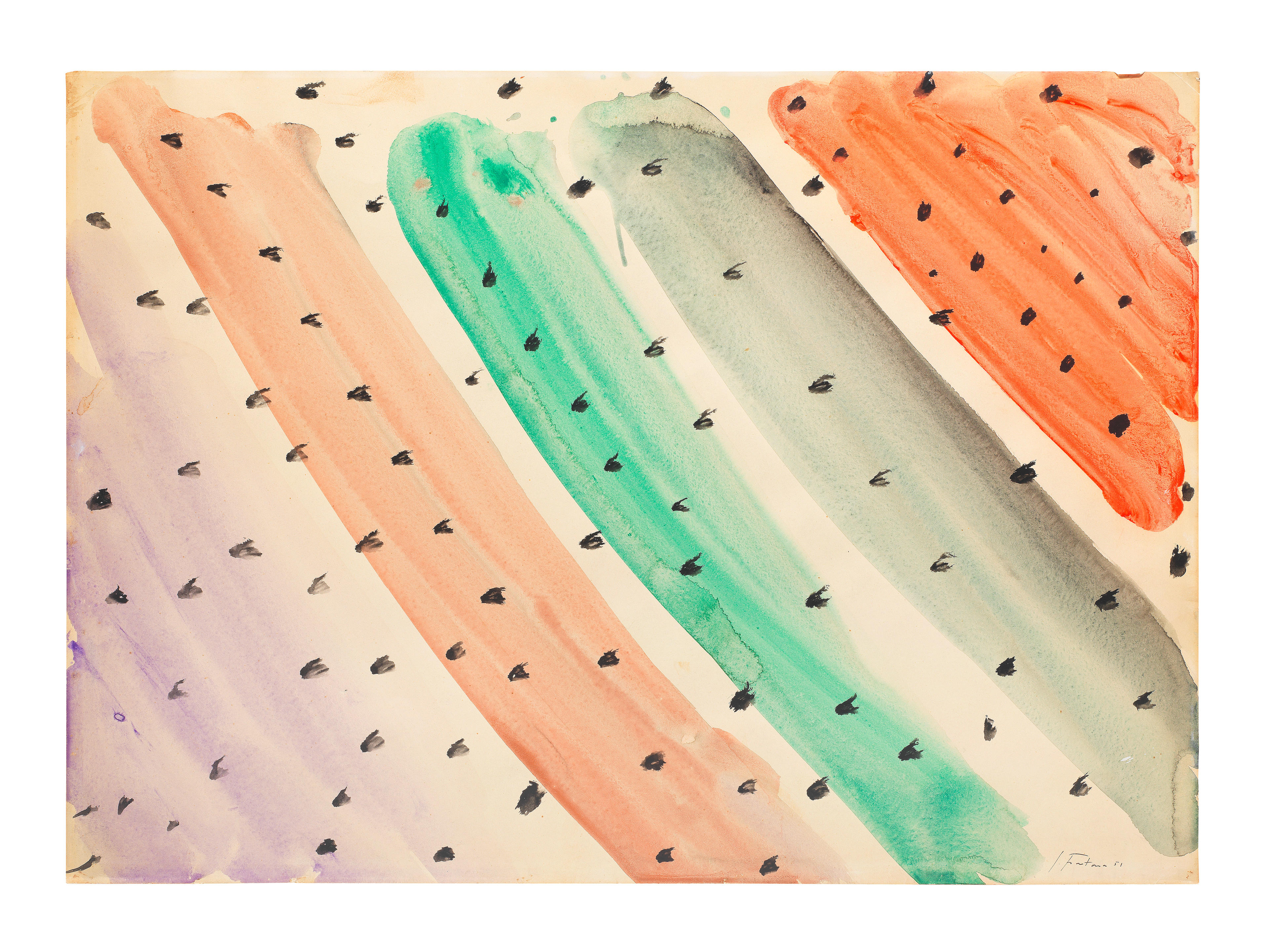
Try LotSearch and its premium features for 7 days - without any costs!
Be notified automatically about new items in upcoming auctions.
Create an alert